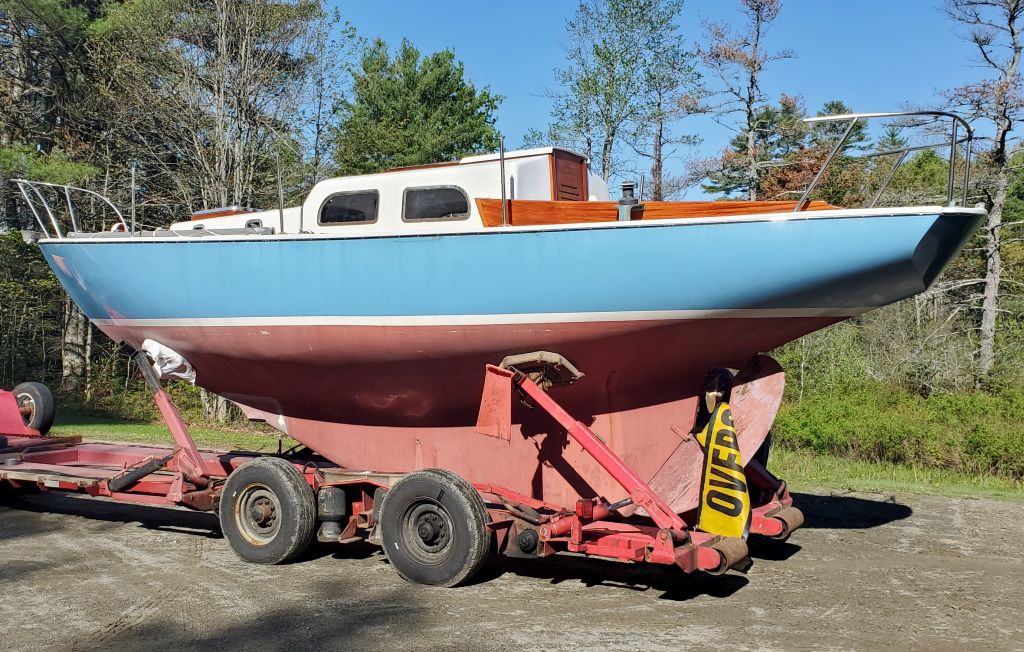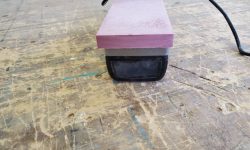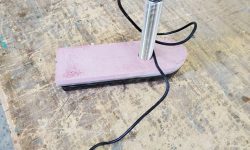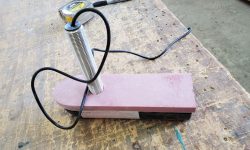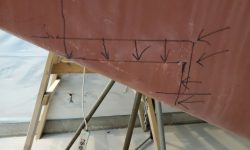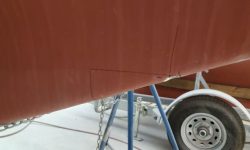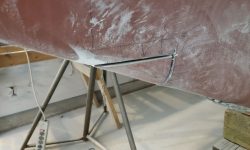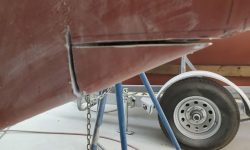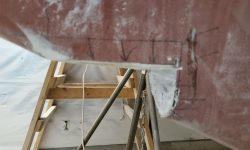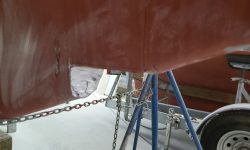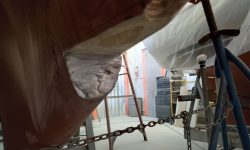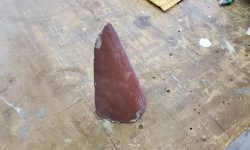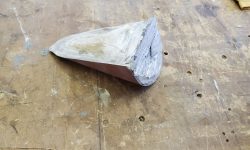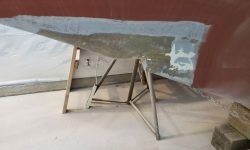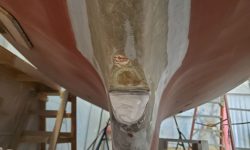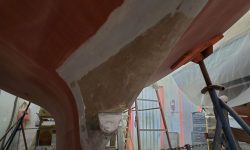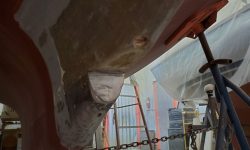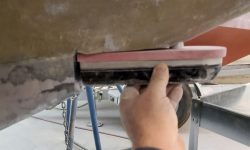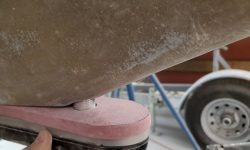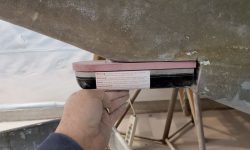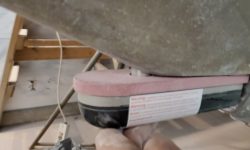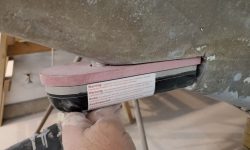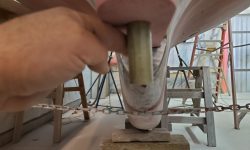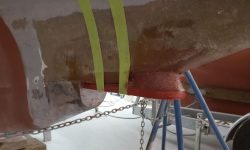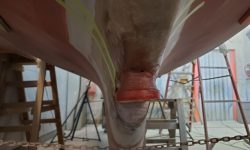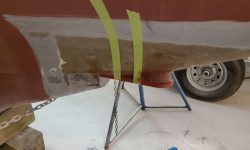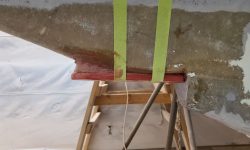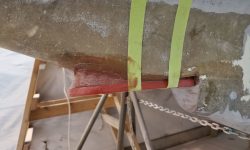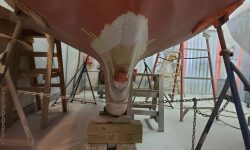January 28, 2021
Lyra 5
Thursday
After a morning appointment away from the shop, and which inevitably took much longer than I’d intended, I got back to work on the transducer installation.
To help create the integral fiberglass housing that would accept the transducer on the hull, I cut some prefab 1/2″ fiberglass to fit the transducer, and just slightly larger all around.
After some final assessment, I settled on the cut lines at the leading edge of the keel, marked here with numerous arrows. I transferred the lines to the port side of the keel as well to aid in cutting. Then, I used a grinder and a cutoff wheel to score the lines and cut as deeply as possible before finishing up the cuts with a reciprocating saw. The aft end of the cut was just a little bit into the lead ballast keel, which was surprising on one level and totally predictable on another. The cutoff would make a unique paperweight and weighed around a couple pounds.
With the bite taken, I prepared the hull all around the area by grinding away the paint, barrier coat (gray), and gelcoat in a wide area, preparing for fiberglass and fairing compound. I cleaned up the cutout as necessary. During an initial test-fit of the transducer, I found that I needed just a bit more room at the aft end, so I pared back the vertical face of the cutout as needed to allow the transducer and its fiberglass top plate to fit.
The plan to secure the transducer, generally speaking, was to build a fiberglass housing that would extend over the red prefab fiberglass and as far down as the black portion of the transducer, covering the stainless steel body of the unit. This would leave the transducer itself (the black portions) free and clear for its visionary needs all around, while securely holding the transducer in place within the molded housing (and well-bedded within as well). I don’t know why transducer manufacturers insist on placing stickers all over the transducer face.
To start this process, I first had to secure the fiberglass plate to the hull, so after final cleanup and preparations I pressed it into a thick bed of epoxy adhesive. Using extra epoxy, I began to shape and fair in the protruding plate, though for now it was just a base coat, with plenty more to come to create a fair and generally hydrodynamic form at the forward edge and elsewhere as needed. I initially registered the fiberglass plate with a short length of 1″ diameter tubing through the hole in the hull, as seen in the first photo, but removed this once I had the plate epoxied and taped in position. I left the initial application of epoxy to cure overnight.
Total time billed on this job today: 3.5 hours
0600 Weather Observation: 30°, cloudy, light snow shower. Forecast for the day: Light snow showers, then cloudy, 33°


